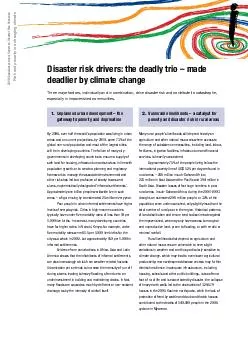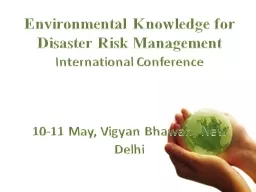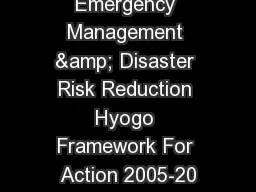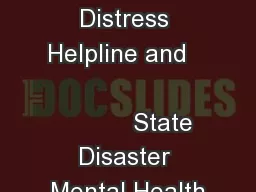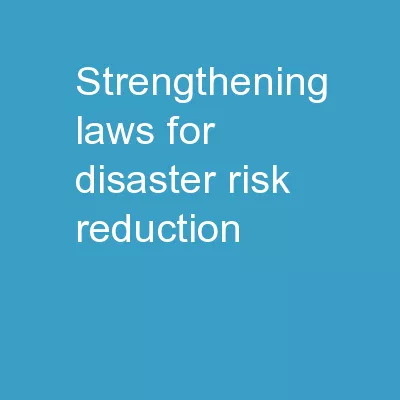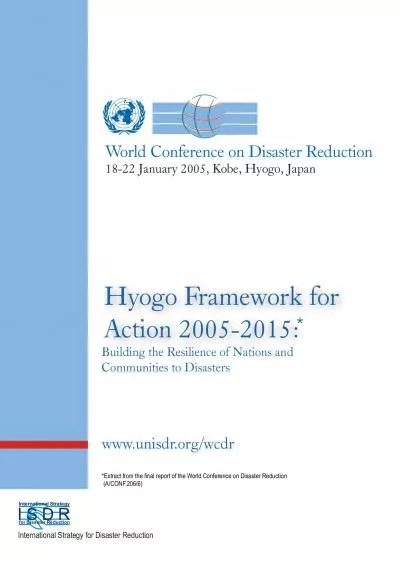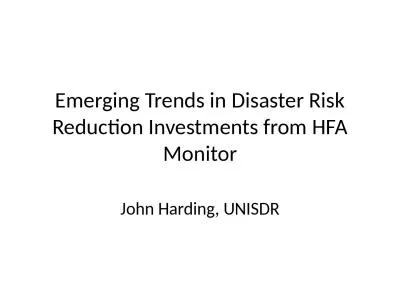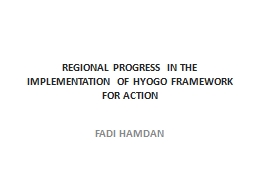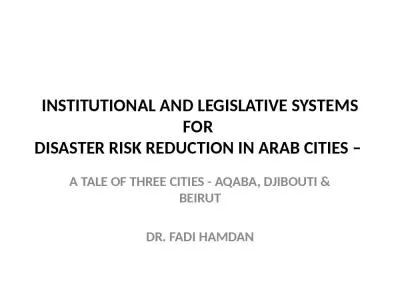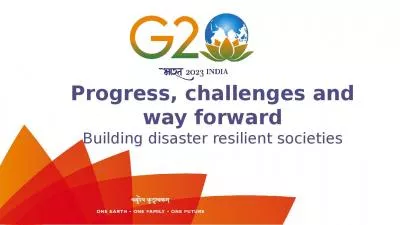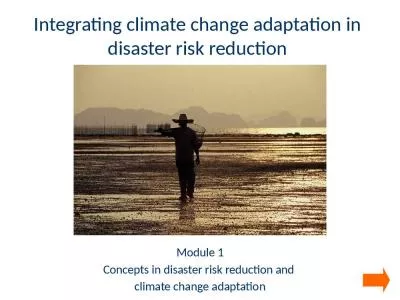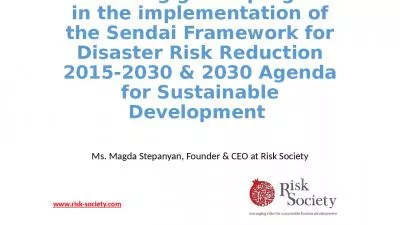PDF-2009 Global Assessment Report on Disaster Risk Reduction
Author : olivia-moreira | Published Date : 2016-03-11
Risk and poverty in a changing climate Disaster risk drivers the deadly trio 150 made deadlier by climate change Three major factors individually and in combination
Presentation Embed Code
Download Presentation
Download Presentation The PPT/PDF document "2009 Global Assessment Report on Disaste..." is the property of its rightful owner. Permission is granted to download and print the materials on this website for personal, non-commercial use only, and to display it on your personal computer provided you do not modify the materials and that you retain all copyright notices contained in the materials. By downloading content from our website, you accept the terms of this agreement.
2009 Global Assessment Report on Disaster Risk Reduction: Transcript
Risk and poverty in a changing climate Disaster risk drivers the deadly trio 150 made deadlier by climate change Three major factors individually and in combination drive disaster risk and cont. PROCEDURES for a CALAMITY AREA DECLARATION. Whenever disaster/calamity occurs:. DDRMC shall convene . DRRMC to conduct a survey of affected area within 24 hours to determine extent of casualties & damage;. International Conference. 10-11 May, Vigyan Bhawan, New Delhi. . Disaster Management: Its Impact in Law and Development. Presentation by:. Hitesh Agrawal & Naiana Jain. Nirma University, Ahmedabad. - An evolutionary dynamism to empower women, girls, and other people to develop inclusive resilience at local level – A Future way. By. Dr. Colonel Nagar M Verma. Director General, Saritsa Foundation. Disaster Services Workgroup. Welcome!. Agenda. Introductions. Overview of known AmeriCorps State Disaster Programs. Group Work. Preparedness. Mitigation. Response. Recovery. Report Out. Today’s Goal. Agenda. Summary of HFA 2005-2015. What parts of “Resiliency” can we measure?. What are the top five functional areas required for building your community sustainably? . Blending mitigation and recovery. NASMHPD Meeting . . July 27, 2014 . Disaster Distress Helpline: . Overview. Goal: To assist individuals and families experiencing emotional distress related to disaster, in order to help them move forward on the path to recovery. Disaster Law Programme. Tessa Kelly. Senior Disaster Law Officer. 15. th. June 2015. Overview of briefing. Why legal frameworks for DRR are important: global guidance and experience. Research: UNDP and IFRC multi-country study. 8-22 January 2005, Kobe, Hyogo, Japan Hyogo Framework for Action 2005-2015: ISDR International Strategy for Disaster Reduction International Strategy for Disaster Reduction www.unisdr.org/wcdr Buildin John Harding, UNISDR. Hyogo Framework monitoring. Currently, 133 countries are reviewing their progress towards the objectives and goals of the Hyogo Framework of Action (HFA) for 2009-2011.. - . Global and regional progress status. Fadi . hamdan. SYNOPSIS. Objectives. Methodology. Background. Some Analysis Results. Ongoing Work. OBJECTIVES. Goals. Critical analysis of progress. Identify any factors obstructing further progress. disaster risk reduction in arab cities – . a tale of three cities - Aqaba, Djibouti & Beirut. Dr. Fadi hamdan. SYNOPSIS. Objectives. Background. Methodology. National Situation Analysis. Construction of Risk Within Cities. Building disaster resilient societies. The Current Landscape of disaster risk. Status of the Sendai Framework Targets at its Mid-Term. Target. Status. Reduce mortality. Better – . decreased. , excluding COVID-19. climate change adaptation. Integrating climate change adaptation in disaster risk reduction. Welcome to e-Learning on integrating climate change adaptation in disaster risk reduction! . This module is part of an e-Learning package on integrating... www.risk-society.com. . Ms. . Magda Stepanyan, . Founder & CEO at Risk Society. Monitoring progress under the Hyogo Framework for . Action (HFA . Monitor) : . 2005-2015. 22 Core indicators . in .
Download Rules Of Document
"2009 Global Assessment Report on Disaster Risk Reduction"The content belongs to its owner. You may download and print it for personal use, without modification, and keep all copyright notices. By downloading, you agree to these terms.
Related Documents

